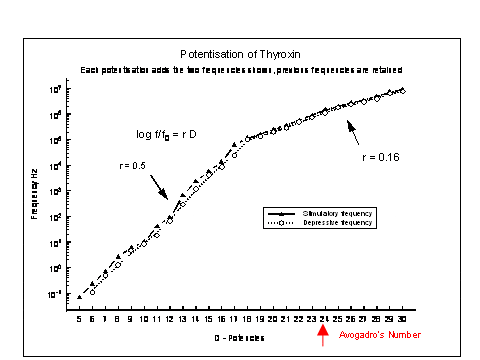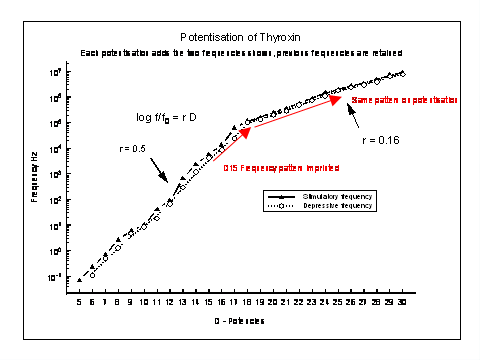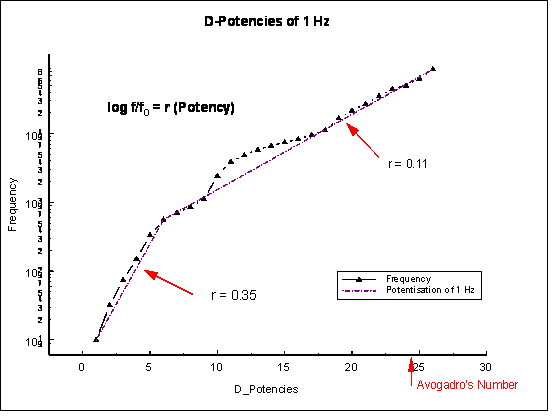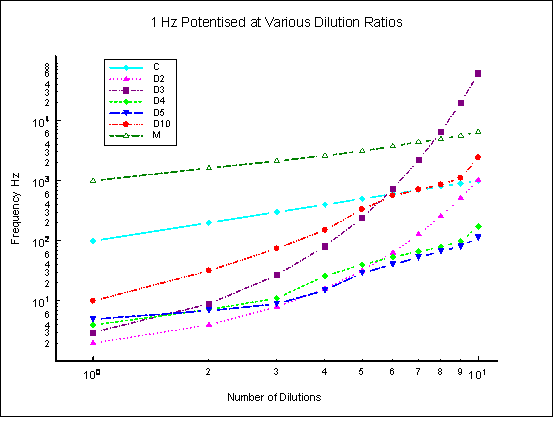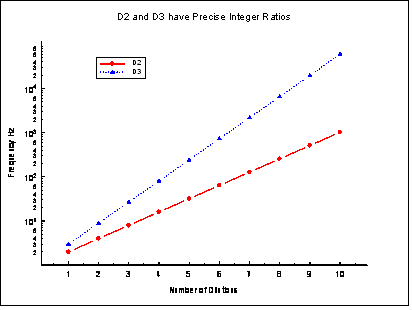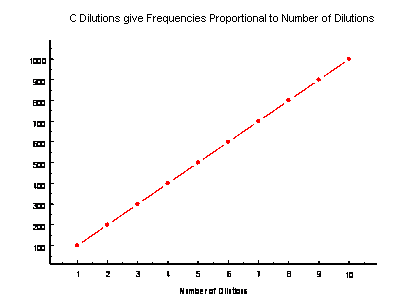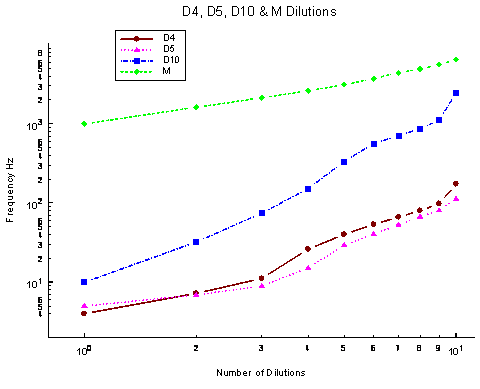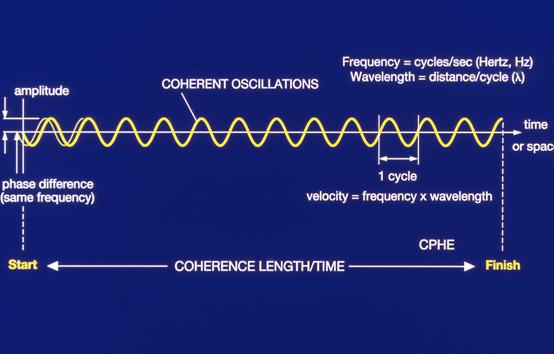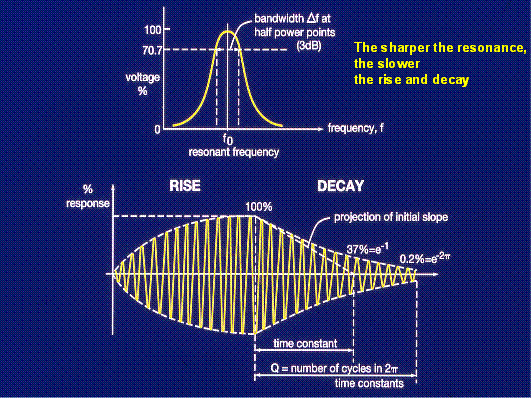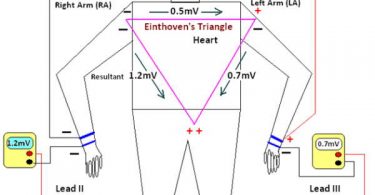Chapter 3 Potentisation and Potencies
3.1 What is being potentised?
To use homeopathy, you do not need to know the answer to this question. However, to understand what is in a homeopathic potency this is a question that must be addressed.
Chapter 2 looked at ways in which frequencies could affect people with particularly drastic effects on those who had become hypersensitive. The frequencies affecting these patients were often those endogenous to the acupuncture meridians. One important result from this co-operative clinical work, was finding that the effects on hypersensitive patients of environmental electromagnetic fields, chemicals or homeopathic potencies could be reproduced with frequency imprinted water. Water in flame-sealed glass ampoules imprinted with frequencies through the glass, was equally effective and eliminated any possibility of chemical contamination. We also found that chemicals generally have characteristic frequency patterns resulting from their interaction with traces of hydrogen-bonded water.
From this, it seemed that the basis of homeopathy must, like all these other clinical effects, be frequencies in water. Homeopathic potencies begin with a “Mother Tincture” which is in effect, a chemical frequency template for subsequent potentisation.
3.2 Thyroxin Potencies
I was fortunate in receiving a set of thyroxin potencies for measurement which had been prepared by Dr. Christian Endler of the Boltzmann Institute, Graz, in connection with his work with tadpoles[1]. The frequency pattern I measured is shown in Figure 1.
Starting from the “Mother Tincture” at D-4, each potentisation added two new higher frequencies; all the existing ones were retained. One frequency was in the phase to stimulate biological activity, the other was depressive of biological activity.
Importantly, there is no discontinuity at potency D24, which is the dilution at which not one molecule of the original substance should remain (Avogadro’s or Loschmidt’s Number). There is just a discontinuity in the slope at D18. The criticism levelled at homeopathy by chemists is correct but, it is frequency and not chemistry that provides the theoretical basis for homeopathic potentisation.
This can be demonstrated by the following experiment. Water was imprinted with the complete pattern of frequencies as previously determined for thyroxin of potency D15. This was then further potentised by serial dilutions and succussions as shown in red in Figure 2.
Figure 1.
Frequency Pattern for D-Potencies of Thyroxin
Figure 2
Potency D15 was synthesised from all constituent frequencies. On dilution and succussion this gave the frequencies as measured in potencies coming from the “Mother Tincture”.
The frequencies measured for each synthesized potency were exactly the same as those for the potencies prepared from the “Mother Tincture” of thyroxin. Yet, these synthesized potencies had started from nothing but water “erased” of all frequencies.
3.3 D-Potentisation from a Frequency
To keep the numbers as simple as possible, the frequency 1 Hz was imprinted into water. Figure 3 shows the pattern of frequencies generated from this 1Hz imprint when serially diluted 10-fold (1+9 dilution) and succussed. All previous frequencies are retained and one further frequency is added at each potentisation. The first dilution gives the original frequency multiplied by the dilution ratio which is 10. Subsequent frequencies follow an approximately logarithmic law with one change of slope like the thyroxin potencies. There should be no effects at Avogadro’s Number (D24) since no chemical was involved and this was indeed the case.
In Figure 3, the experimental points fit the dotted lines given by the empirical equation:
log f/f0 = r (Potency)
where the dilution ratio is that for a D-potency and the factor r = 0.35 and 0.11 for the two regions of roughly constant slope.
Figure 3
3.4 Potentisations in General
When water is imprinted with a frequency and then serially diluted and succussed, the original frequency is multiplied by the dilution ratio and added to the water. This applies to a mechanical succussion. If succussion is carried out by applying a magnetic field (as will be discussed later) the only frequency detected is that arising from the dilution. The previous frequencies are present although hidden and can be recovered by a mechanical succussion.
Not all dilution ratios behave in this simple way. Some dilutions give no frequencies at all, others give the frequency of a previous dilution.
- Dilution ratios 1.0 to 1.5 gave no potentisation.
- Dilution ratios 1.6 to 1.9 gave 1.5 Hz.
- Dilution ratios 2 to 5 and 8 to 10 gave the expected potencies.
- Dilution ratio 7 gave the same as dilution ratio 6.
- Dilution ratios 11, 13, 19 did not potentise (all prime numbers).
- Dilution ratios 20 to 23 all gave the potency of dilution 20.
- Dilution ratios 24 to 29 all gave the potency of dilution 24.
- This integer pattern was repeated at the C and M dilutions.
Figure 4
Effect of dilution ratios on the potency resulting from a 1 Hz frequency imprint.
This is summarised graphically in Figure 4 where the frequency of 1 Hz was imprinted in each case. Clearly, it particularly important to be accurate in diluting for D-potencies as a 1+10 dilution instead of a 1+9 will not potentise.
Figure 5 shows the results of potentising using a number of different dilution ratios in addition to the D-potencies already shown in Figure 3.
Figure 5
Frequencies from 1 Hz Imprinted and Potentised
at M, C and D potencies (D=10 in graph) and Dilutions D=2, D=3, D=4, D=5.
If living systems are macroscopic quantum systems as I proposed in 1997 in a lecture at the Department of Frontier Sciences in Temple University, Philadelphia[2] then one should expect integer relationships to appear.
Figure 6 shows that D2 and D3 potencies have frequencies f which increase with the number of the dilutions N according to the equation:
f/f0 = (Dilution Ratio)N
or
log f/f0 = N log (Dilution ratio)
The original imprint f0 at N = 0 is correctly given as 1 Hz since any number raised to the power of zero is unity or, the logarithm of 1 is zero.
Figure 7 shows that C potencies have frequencies f which increase linearly with the number of dilutions N:
f/f0 = N (Dilution Ratio)
In this case, the mathematical model is predictive because extrapolating back to N = 0, there should be no 1 Hz after the initial potentisation and this seems to be the case.
Figure 6
D=2 and D=3 potencies have frequencies which are integer ratios of the dilution
Figure 7
C potencies have frequencies which increase linearly with the dilution ratio.
Figure 8
Dilutions giving non-linear plots
Figure 8 shows that the remaining dilution ratios tested are best plotted on a log/log scale but they do not give straight line plots. They can be approximated by straight line sections as in Figure 3 but in general, they can be represented by the equation:
log f/f0 = Nr log(Dilution Ratio)
where N = the serial number of the dilution. The means and standard deviations for r are:
2-Fold Dilution Ratio : r = 1
3-Fold Dilution Ratio : r = 1
4-Fold Dilution Ratio : r = 0.561 ± 0.040
5-Fold Dilution Ratio : r = 0.411 ± 0.083
10-Fold Dilution Ratio : r = 0.551 ± 0.029
1000-Fold Dilution Ratio: r = 0.098 ± 0.004
In allergy therapy, a 5-fold dilution ratio is commonly used and the dilution is done with a syringe. In this case, effective succussion, as detected by a change in frequency only takes place when the dilution is sucked up through the needle ready for the next dilution. This must be the instant at which succussion by vortexing takes effect.
3.5 Frequency and Coherence
Having introduced and made much use of the concept of frequency already, it is appropriate to give it further consideration. Figure 9 shows the quantities involved in describing the properties of an oscillation of which frequency is only one.
Anything in a state of oscillation has a variation in amplitude which usually repeats in cycles according to the mathematical relation called a sine function, hence the term sine-wave. This function is the mathematical solution of the equation describing the oscillation and if it had not already been found in trigonometry, it would have had to be invented for this purpose.
The number of cycles per second is the frequency of the oscillation. If the oscillation is moving through space, the distance travelled per cycle is the wavelength. For such a wave, the frequency multiplied by the wavelength gives its velocity of propagation.
The more precise the frequency, the narrower is the band-width (measured between the half-power points) and the longer the resonance takes to build-up and decay (its echo). This is also measured by the parameter ‘Q‘ (frequency /bandwidth). These are all mathematically related as shown in Figure 10.
Two waves can have the same frequency and wavelength, but it may not be possible to superimpose them, because of a difference in phase as defined in Figure 9. If the phases of two waves of the same frequency differ by half a cycle, they would be mirror images and if combined they would cancel. This is called destructive interference. A geometrical model is often used, half a cycle in degrees of a circle is 180?; in radian measure for a unit circle of circumference 2?, it is ?. Coherence is then a measure of the capacity of two waves to interfere.
Figure 9
The Quantities Describing an Oscillation
Figure 10
Sharpness of Resonance
3.6 “Mother Tincture” – Source of Frequencies in Homeopathy
In Chapter 2 it was described how identical reactions can be triggered in a hypersensitive patient by chemical means and neutralised electrically or triggered electrically and neutralised chemically and that the clinical effects of environmental frequencies or chemicals can be reproduced by water contained in a sealed glass ampoule after its exposure to frequencies of an alternating magnetic field, without any chemical contact while unexposed water produces no clinical effects.
The “Mother Tincture” from which the potentisation of a homeopathic remedy commences, is in general a chemical,l whether inorganic, organic or biomolecular. There are exceptions such as the potencies of magnetis, electricitas and X-ray. If potentisation does involve the generation of patterns of frequencies, then it is essential to know the frequency pattern from which a potency is to be developed.
In 1991, I retired from the University and had to close down my laboratory there. Before so doing, I measured the frequency signatures of my entire stock of chemicals. In general, a chemical element has a single frequency, a salt such as sodium chloride has three frequencies, more complicated molecules have more frequencies.
The frequency signatures of chemicals in contact with the body are as effective in producing frequency entrainment at an acupuncture point as those from an external oscillator should they happen to come within the entrainment range. Holding a glass bottle containing a chemical for just one minute is sufficient to entrain an acupuncture point to the chemical; it takes about 10 minutes for the point to relax back to its endogenous frequency.
The first column of Table 1 lists the acupuncture points within the entrainment range of the chemical frequency signatures of sodium chloride. Column 3 shows the effect of entrainment when holding a tube containing sodium chloride solution with the frequency signature shown in Column 2. Similar entrainment effects are found in cell cultures prepared in the presence of toxic environmental chemicals.
Table 1
Entrainment of Acupuncture Points by Chemical Signatures
(all frequencies are in MHz)
| Acupuncture Points | Meridian |
Frequency Frequency
of NaCl Meridian Frequency
when holding NaCl SI1
small intestine
1.23
1.24
1.24
Or1
organ degeneration
3.80
5.1
5.1
FatD1
fatty degeneration
36.5
40
40
In 1995, by courtesy of Dr. John Laseter of Accu-Chem, Richardson, Texas, I was able to measure the frequency signatures of their reference collection of toxic environmental chemicals. The only ones which did not give a frequency signature were halogen saturated molecules such as octachloro-napthalene.
In the course of this work, frequency signatures were measured for the n-alkanes. For n-hexane, these disappeared when it was dried with silica gel and only reappeared when the trace water content reached 14 ppm.
If there are any interactions involving frequencies in water and the molecular spectra of the n-alkanes, these must be in the far-infra-red (FIR) rotational spectrum. N-hexane is widely used as a solvent in spectroscopy, because this is the only place that it has any spectrum. Figure 12 shows the linear relation between the published spectral lines for n-hexane and the measured frequencies arising from its interaction with trace water. It is emphasised that the ordinate is derived from tables of spectra and only the abscissa is a measurement.
I needed to place some arbitrary restriction on the hundreds of rotational water lines which might otherwise have had to be considered. I noted that the rotational water lines at 28 µm (357 cm-1), 47 µm (213 cm-1) and 78 µm (128 cm-1) can become coherent enough for use in a water vapour laser and concluded that these should also provide the necessary coherence for water “memory”.
Figure 12
The relation between the published spectral lines for n-hexane and the frequencies measured arising from its interaction with trace water.
I chose to compare the wave numbers of the above three spectral lines for water with the tabulated FIR spectra for the n-alkanes. I postulated that the observed water resonances might be related to their differences. In Table 2, these are compared (in red) to measured resonances in n-hexane. The mean of the ratios (with standard deviations) of the far-infra-red frequencies (FIR) and the low frequencies (ELF) is remarkably constant at 6.57 cm-1 per HzELF or 1.97 × 1011 ± 0.16 HzFIR/HzELF .
Table 2
Relation Between Far-Infra-Red Spectra and ELF Resonances for
Trace Water in n-alkanes
|
n-Hexane Lines from Tables cm-1 |
Water-Laser Lines cm-1 |
n-Hexane – Water-Laser Differences cm-1 |
n-Hexane FIR Measured cm-1 |
n-Hexane ELF |
Measured
Hz
385
357
28
28
4.141
403
357
46
46
6.793
450
357
93
93
13.11
485
357
128
125
19.16
403
213
190
192
26.51
485
213
272
263
42.52
3.7 Water – Effects of Frequency Imprinting
The above relates to effects of trace water in n-alkanes. The next question was whether the same argument could be applied to bulk water and by implication to the interaction between a homoeopathic “Mother Tincture” and water.
I speculated that similar frequencies might arise from differences between lines in the rotational spectrum of water without the need for any n-hexane. In Table 3 the differences between a pair of water-laser lines are divided by the 6.57cm-1/HzELF the ratio found for the n-hexane/water interaction. The calculated frequencies were confirmed experimentally.
It is interesting that the frequency 1.42 GHz (21 cm) appears in relation to the water-laser lines since this is the microwave frequency of molecular hydrogen. Even more interesting is the frequency 0.384 GHz (348 MHz) which is the high band frequency of the heart meridian and chakra. Is a most important acupuncture meridian frequency locked to a fundamental physical resonance in the rotational spectrum of water?
Table 3
Resonances for Water
| Water Laser Lines [3]
Differences cm-1 |
Frequencies THz |
Measured in Water GHz |
Measured in Water Hz |
|
357 – 127 = 230 |
6.90 |
4.03 |
36.8 |
|
357 – 149 = 208 |
6.24 |
3.56 |
34.2 |
|
357 – 211 = 146 |
4.38 |
2.65 |
22.6 |
|
211 – 127 = 84 230 – 146 = 84 |
2.52 |
1.42 |
13.3 |
|
211 -149 = 62 208 – 146 = 62 |
1.86 |
1.01 |
9.50 |
|
149 – 127 = 22 230 – 208 = 22 |
0.66 |
0.384 |
3.53 |
The next experiment was to determine what happened to all these frequencies if a frequency was imprinted into water by succussion.
When water was imprinted by succussion with 10 Hz the frequencies in Column 1 of Table 4 were replaced by those shown in Column 2. In Column 3 it is shown that imprinting 10 Hz splits the water line energy differences proportionately in all other frequency bands. If the imprint frequency was greater than the water resonance frequency, only the sum frequency was detected.
Table 4
Effect of Imprinting a Frequency by Succussion
| Water Resonances | Frequencies Detected | Sidebands |
| 22.6 Hz13.3 Hz | 32.15 Hz & 12.78 Hz22.21 Hz & 3.196 Hz | = 22.6 ± 10Hz= 13.3 ± 10 Hz |
| 2.23 GHz1.25 GHz | 1.215 GHz & 1.25 GHz2.17 GHz & 0.322 GHz | = 2.23 ± 0.98 GHz= 1.25 ± 0.92 GHz |
| 364 cm-1239 cm-1 | 24 µm (= 416 cm-1 ) &32 µm (= 312 cm-1 )
32 µm (= 312 cm-1 ) & 60 µm (= 166 cm-1 ) |
= 364 ± 52 cm-1= 239 ± 73 cm-1 |
To investigate these frequency ratios further, water was imprinted at frequencies between 0.001 Hz and 0.01 Hz (chosen for reasons of available frequency coverage). This water also showed corresponding resonances between 200 MHz and 2GHz giving a mean frequency ratio (and standard deviation) = 1.98 ± 0.07 × 1011 HzFIR/HzELF. For the converse experiment, water was imprinted at frequencies between 200 MHz and 2GHz. This showed resonances between 0.001 Hz and 0.01 Hz with a mean frequency ratio (and standard deviation) = 2.09 ± 0.43 x 1011 HzFIR/HzELF.
Conclusion
Starting with the frequency content of a set of potencies of thyroxin, the effect of dilution and succussion on the numerically simple frequency of 1 Hz showed frequency patterns which evolve with the dilutions. It was emphasised that accuracy in dilution is essential particularly in the case of D potencies as a 1+10 dilution will not potentise.
Of the various parameters by which frequencies are described, their precision and coherence, or ability to form stable interference relations, are of particular importance if homeopathic potencies are to be able to interfere with endogenous frequencies in a living system.
A homeopathic potency starts with a “Mother Tincture” which is usually of chemical origin and which has a characteristic frequency signature arising from the interaction of the molecule with trace or vicinial water. This is the frequency signature which it brings to the potentisation process.
A question which needs to be addressed is whether and if so to what extent, does the chemistry of a pharmaceutical give rise to a frequency signature which has a homeopathic activity. I have had to neutralise a patient allergic to the frequency signature of a required pharmacological preparation, so this is not a trivial question. Any use of a syringe will effect a potentisation. As an example, the frequency signatures for soluble asprin and aconite 6C are compared in Table 5 which shows how well the frequencies match although they are in opposite phases of biological activity.
Table 5
Frequency Signatures for a Homeopathic Potency and a Pharmaceutical Product Frequencies are given in Hertz (Hz) in scientific notation.
= stimulatory (hyperactive); ¯ = depressive and stressful (hypoactive)
|
Soluble Asprin |
Aconite 6C |
|
4.911×10-4 |
|
|
3.032×10-1 |
¯3.013×10-1 |
|
7.712×10 0 |
|
|
¯5.513×10+2 |
|
|
¯1.23× 10+6 |
1.22× 10+6 |
|
7.10× 10+6 |
¯7.10× 10+6 |
|
3.35× 10+7 |
The imprinting of a frequency into water seems to result in the generation of side-band frequencies proportionate in all the frequency bands. A point of particular note which has appeared in many places already, is that many frequency patterns do seem to come in bands of high and low frequency. The next Chapter will deal with this and the theory of water and frequencies in water.
[1] Endler P.C. (2003) Homeopathy Research – An Expedition Report. Graz: [email protected].
Smith C.W. & Endler P.C. (1994) Resonance Phenomena of an Ultra High Dilution of Thyroxine – Preliminary Results. In: Endler P.C. & Schulte J. (eds.) Ultra High Dilution. Dordrecht: Kluwer Academic, pp. 203-207.
[2] Smith C.W. Is a living system a macroscopic quantum system? Frontier Perspectives, 7(1), 9-15 (1998), (Temple University, Philadelphia, audio tape of 1997 lecture from Frontier Sciences Department).
[3] Appl. Phys. Lett. 12(5): 168-176 (1968)

